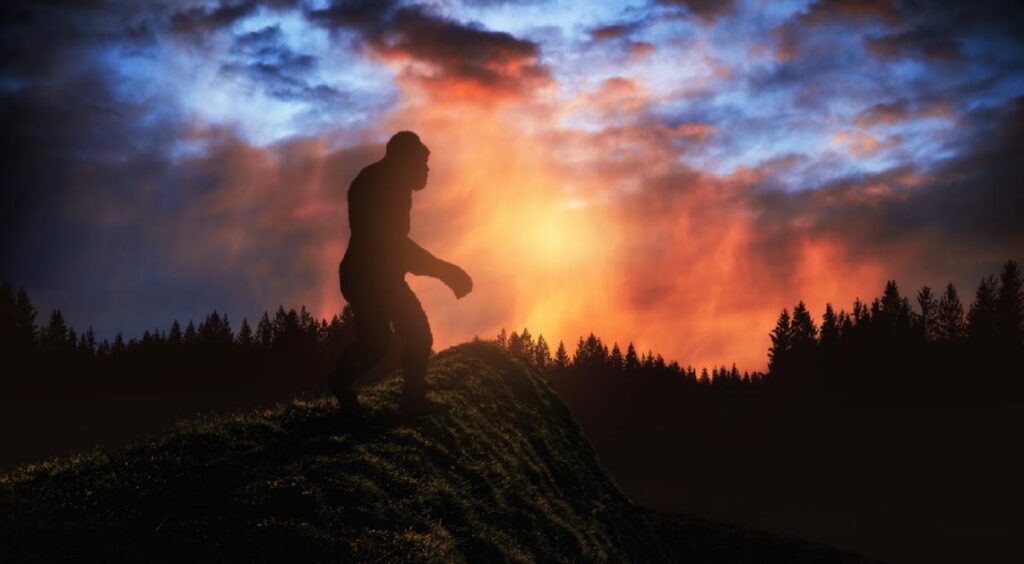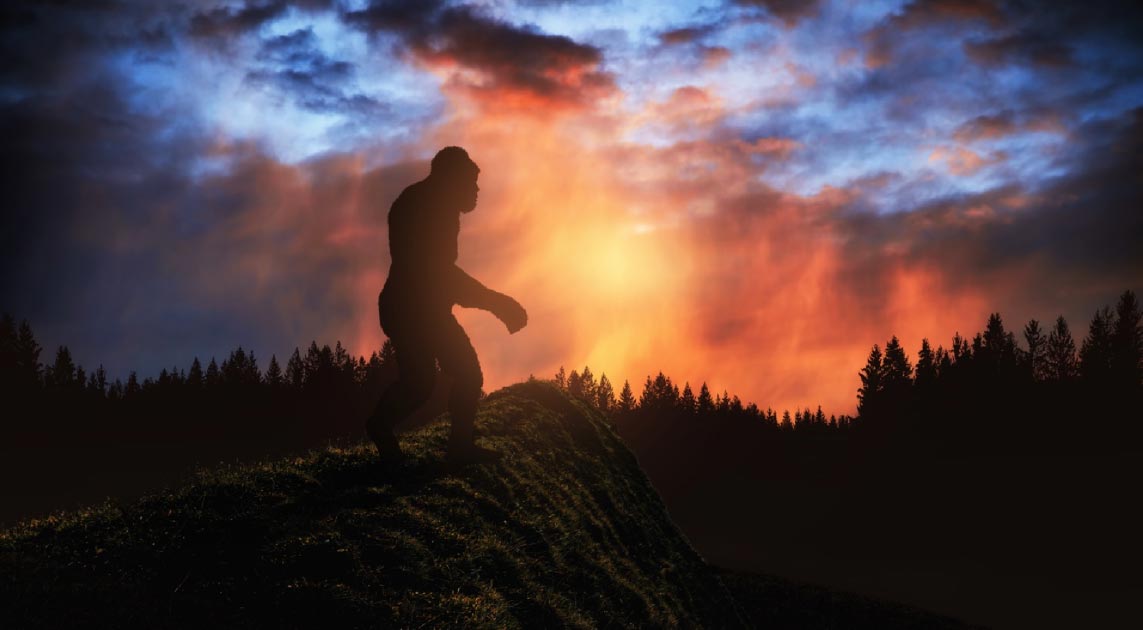

A new documentary series on the Travel Channel sets out to find Bigfoot in the Pacific Northwest. North America’s fabled apelike creature has been a life-long obsession of author and explorer Russell Acord and now he and his colleagues are featured in the new Travel Channel documentary series Expedition Bigfoot, which premiered last night (December 8th) at 10 p.m. ET/PT.
A Live Science article reports more than “10,000 eyewitness accounts” have described Bigfoot encounters in the continental U.S. over the past 50 years and that Bigfoot even has a file at the FBI, that was released to the public on June 5 th 1977.
The file revealed that the study of five unidentified ‘suspected’ Bigfoot hairs “were all types of deer”, wrote FBI Assistant Director Jay Cochran, Jr. But that isn’t stopping Acord and his team, who are convinced an undiscovered creature wanders the woodlands of Northwest America.

A sign warning of Bigfoot sightings. (Gnashes30 / CC BY-SA 3.0)
Fossil Evidence Is a Big (foot) Problem
The Travel Channel researchers scoured the Pacific Northwest, where annually about one-third of all Bigfoot sightings and encounters occur, and using state-of-the-art equipment and computer algorithms the team, including a primatologist, analyzed footprints and ‘possible’ nests. They also recorded what they claim are “vocalizations at Bigfoot hotspots” on a 90,000 acre (36,421 hectare) region of land in central Oregon.
All over the world in remote rural regions hundreds of thousands of reports have described a tall, hairy creature resembling a giant ape, able to walk on two legs, and throw boulders from time to time. However, according to primate researcher and Expedition Bigfoot team member Mireya Mayor, director of the Exploration and Science Communications Initiative in the College of Arts, Sciences and Education at Florida International University, to date, there has not been a jot of fossil evidence demonstrating that any other large primates than humans ever inhabited the forests of North America.

Some Bigfoot proponents believe that Bigfoot could be a relict population of the extinct primate Gigantopithecus blacki, fossil jaw shown. (Wilson44691 / CC BY-SA 3.0)
If Apes Are Anything To Go By
While the idea of a monstrous oversized ape-like creature wandering the woodlands of North America is so easy to throw into the bin, especially since no evidence exists, Mayor told Live Science that the possibility of finding a new type of undiscovered primate “is totally within the realm of possibility”. And Mayor speaks from experience because in 2001 she co-discovered a new species of tiny mouse lemur, one of the world’s smallest primates weighing less than 2 ounces (57 grams).
Mayor added that while small animals can conceal themselves in the wild, a very big primate, such as Bigfoot, could also “conceal itself from humans quite effectively”, as long as the creature had food, shelter, and an isolated habitat. Illustrating this Mayor explained that when she went in search of western lowland gorillas there were times when “we were no more than 3 feet (1 meter) away from a 450 pound (204 kilogram) silverback and didn’t know that it was there for a good hour or two”.

Artist representation of a Bigfoot. (LeCire / Public Domain)
More ‘Shaky Footage’ of Bigfoot Might Not Help
The Travel Channel team claim to have captured video footage of a creature that fits the description of Bigfoot; a large, slow moving, apelike beast, that to Mayor is probably “the most compelling piece of evidence that I’ve seen so far”. But as compelling as this new evidence may be, no genetic data gathered from a sliver of organic tissue, feces, or hair has been provided which is a must to scientifically determine the existence of any such new species. So, getting excited about more ‘shaky footage’ doesn’t exactly add to their scientific approach.
In a Guardian article, paleontologist David Hone, a senior lecturer in zoology with the School of Biological and Chemical Sciences at Queen Mary University of London, said it is only with genetic evidence that a new “holotype” can be established, which is a “single physical specimen representing the species”. What’s more, any new creatures behavioral, anatomical, and genetic features that establish its “uniqueness” all have to be provided.
Is Bigfoot An Unknown Bear
Where is Bigfoot when it comes to becoming a new holotype? Most of the physical hair samples provided so far as ‘possibly’ representing a ‘Bigfoot’ type creature, that have undergone genetic analysis, have according to Live Science, “all belonged to existing animals”. In 2014 alone, of the 36 “possible Bigfoot” hair samples collected around the world, 34 were found to be horses, raccoons, deer, cows, and coyotes, and two instances where the hairs belonged to a Malaysian tapir and a human.
While this article should thoroughly satisfy the skeptics among you, the Bigfoot hunters should also have cause for satisfaction, for according to the March 2014 edition of Proceedings of the Royal Society B, the remaining two of the 36 samples, “did not belong to any known species”. And while DNA data proved these mystery hairs hadn’t come from primates, the scientists suspect they “belong to an unknown bear species”, which if ever found, hopefully, has rather large feet.